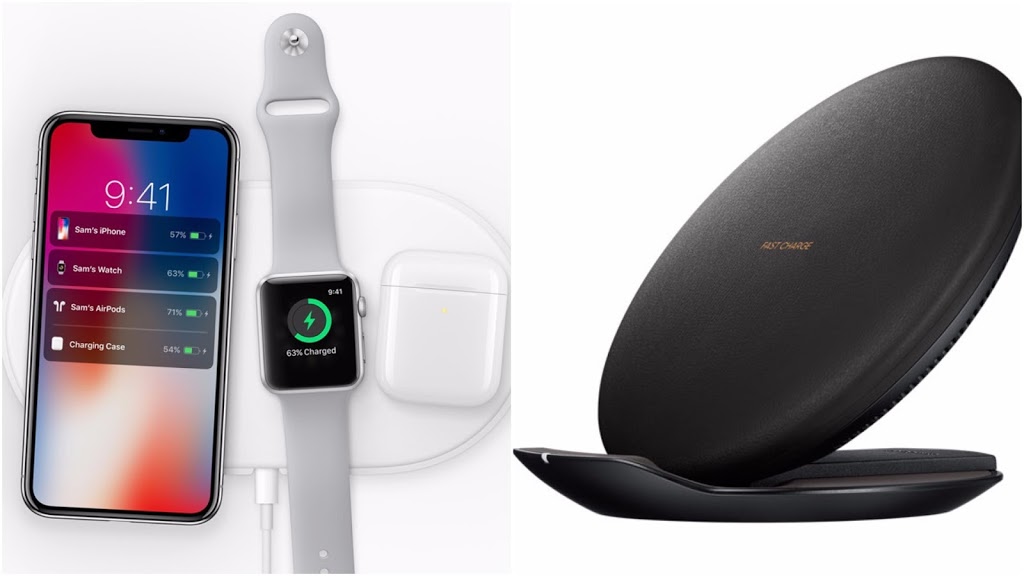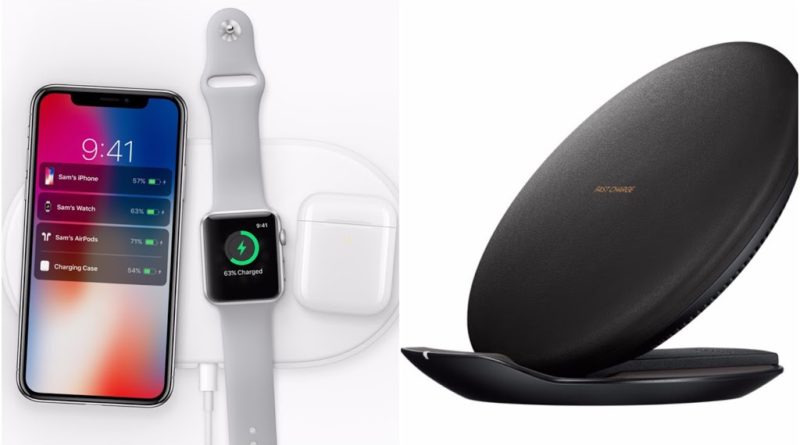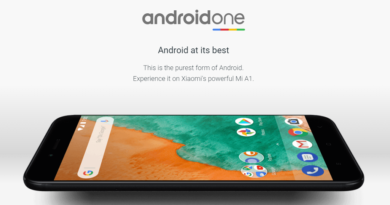Wireless charging – A gimmick in smartphone?
Few major smartphone maker enabled their flagship phone to support wireless charging and from past couple of years, it became a comparable feature between high-end smartphones. This year apple too launched their iPhones with wireless charging support. Year after year improvements are done in wireless charging technology to make it more efficient but important question to consider here – do we really need wireless charging in our smartphones? Is it better than conventional wired charging? does it reduce the charging time?
 |
| Wireless Charging Pad/Dock (Image Source: Apple, Samsung) |
Lets go over the basics of wireless charging to find answer to all these questions.
What is wireless charging
As name suggest, charging is achieved without connecting any physical cable to smartphone. Power is transmitted via. charging pad and is received at smartphone end via. a built-In receiver or a case installed with receiver. Charging your phone is as simple as dropping it on a charging dock.
How wireless charging works
Tech behind wireless charging is based on Inductive charging, a coil placed in charging pad (transmitter) creates an electromagnetic field on connecting to power source and receiver coil placed in smartphone gets the power from this field resulting in current generation for charging the built-In battery.
For this to work, smartphone (receiver coil) has to be brought in contact or close to charging pad (transmitter) within the specified limit. Once done current is induced in the smartphone’s receiver coil resulting in battery charging.
Advantages & Disadvantages of wireless charging
Now that we know how the tech for wireless charging works, lets move on to see its benefit and drawbacks.
Advantages:
- Safer way to transfer power to your phone.
- Simple to just drop your phone on the charging pad.
- Puts less strain on the charging port of your phone.
- Multiple smartphones can be charged at once without the need to carry different cables.
- Qi wireless charging pads being installed in various places around the world, if you run out of juice and don’t have a cable you can still charge your phone.
Disadvantages:
- Wireless charging is slower and less efficient than wired charging.
- If you’ve got your phone charging via a cable, you can still hold it and use it as normal. If you take your phone off a wireless charging pad to use it, it stops charging.
- Wireless charging usually makes your phone overheat which can harm your battery.
- Adapters and cases are expensive because the technology is expensive to produce.
- Can’t be used with Apple CarPlay and Android Auto in the car.
Definitely Wireless charging provide convenient secondary way of charging smartphone but it’s lacking behind on important factors to consider it over wired charging. Personally, I prefer fast wired charging as it charge the battery real fast without compromising on smartphone usage. Consider Oneplus’s Dash charge – it is insanely fast in charging your oneplus smartphone and no other manufacturer in market could provide that fast wired charging yet.
Speed of wireless charging has to be further increased along with providing a comfort of charging even while holding the phone (without dropping it to charging pad/dock) to make this tech usable in real time by large group of people.
Shop It Now:



